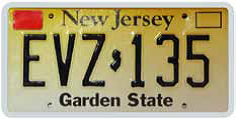

A new study from The Children’s Hospital of Philadelphia (CHOP) provides initial evidence that New Jersey’s Graduated Driver Licensing (GDL) decal requirement lowers crash rates among probationary teen drivers and supports the ability of police to enforce GDL provisions.
According to the study, which linked New Jersey’s licensing and crash record databases to measure effects of the requirement, crash involvement of an estimated 1,624 probationary drivers was prevented in the first year after the decal’s implementation.
In May 2010, New Jersey implemented Kyleigh’s Law, requiring all youth 16 to 20 years of age holding a permit or intermediate license to display a reflective decal on the front and back license plates of vehicles they are operating. On any given day there are more than 150,000 probationary drivers on New Jersey’s roadways. The decal was intended to facilitate police enforcement of GDL restrictions and, ultimately, reduce teen crash rates.
While many other countries have had decals for decades, New Jersey is the first state to implement them in the US. The CHOP study is the first in any country to evaluate the effect of the use of decals on crash rates.
Researchers at CHOP found that, in the first year after the new decal requirement took effect, the rate of GDL-related citations issued to teen drivers increased by 14 percent and the rate of police-reported crashes among intermediate drivers decreased 9 percent. Significant effects were also observed for specific types of intermediate driver crashes. For instance, multiple-vehicle crashes decreased 8 percent and crashes involving a teen driver with peer passengers decreased 9 percent.
Researchers linked New Jersey’s licensing and motor vehicle crash databases from January 1, 2008 to May 31, 2011 to compare monthly rates of GDL-related citations and crashes for probationary drivers in the two years before the decal’s implementation and in the year after.
“The rate of intermediate driver crashes significantly declined during the period after the decal requirement went into effect,” says lead author Allison Curry, PhD, MPH, director of Epidemiology and Biostatistics at the Center for Injury Research and Prevention at CHOP. “The number of crashes prevented is equivalent to the number of students attending a large high school. New Jersey youth and other road users are safer as a result of the decals.”
New Jersey already has one of the most comprehensive GDL programs in the country and also one of the lowest teen driver crash fatality rates. Even so, New Jersey was able to achieve additional reductions in crashes with a decal provision as part of its GDL.
Researchers at CHOP suggest states with higher teen crash rates than New Jersey might realize even greater gains from including decal provisions as part of their GDL programs because they have more room for improvement. According to a 2012 Governor’s Highway Safety Association report, six states – Kentucky, Michigan, Alaska, Iowa, Minnesota, and North Carolina– have considered decal legislation, but no bills have been approved.
Dr. Curry has the following advice: “Parents should use GDL as a guide to keep their young drivers safe. This means starting them out in low-risk conditions. Keep the number of passengers to no more than one, limit nighttime driving to before 10 pm, always prohibit cell phone use while driving, and insist on seat belts for every occupant on every drive.”
Source: Children’s Hospital of Philadelphia